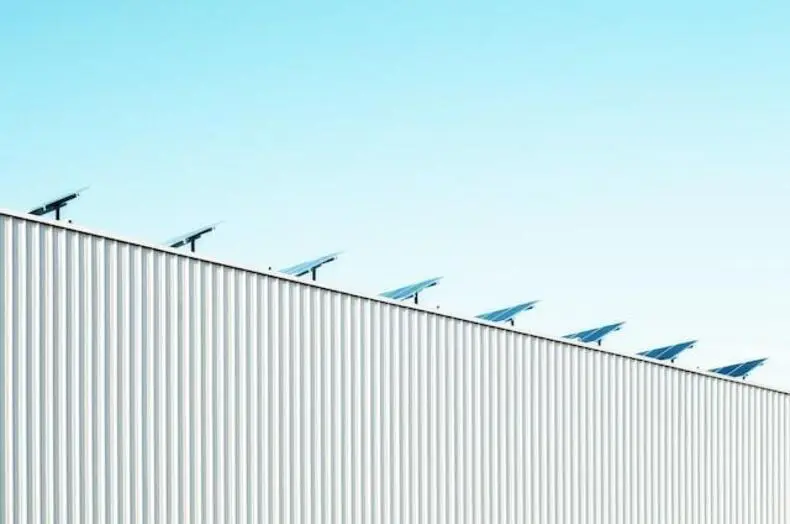5 Key Components of Building a Smart Warehouse in 2024

Warehouse perceptions have changed extremely over the past two decades. In line with the intense evolution of technology, engineers and architects have found ways to implement and use all the benefits of it. The vision of a smart warehouse is much more than maintaining control through a mobile app. In addition to the security of warehouses, it is bringing energy efficiency, as well.
Building a smart warehouse with modern technologies is the obvious way to move forward. The process of building a smart warehouse can be complicated, but like everything else, start by identifying your goals and analyzing your warehouse activities. Here are some key components of building a smart warehouse in 2024.
1-Importance of Proper insulation
Though it’s not quite a smart device, insulation is unquestionably a smart investment. Because warehouses hold valuable goods, they must have adequate insulation to ensure that they are delivered undamaged and stored safely. So, before spending money on smart technology, be certain that your investment will be safe.
Your warehouse can have ideal working conditions if it includes good insulation. In addition to keeping your smart machines and new products safe, your staff will benefit from working in a cool summer environment and a warm winter one. In the long term, insulation will essentially pay for itself because it will reduce your electric bill. See why installing insulation should be the first step in creating a smart warehouse by reading more about it at insulation4less. There you will find out all the advantages that high-quality insulation can offer you and your company.
2-Flexible Warehouse Design
Warehouses with built-in flexibility can make the most of their available space and maintain an effective workflow. This can be very helpful in meeting the constantly shifting needs of customers. Many companies use a “team-build” approach from the start to include flexibility in warehouse design. They also redesigned the block layout to ensure that products flow smoothly through the warehouse.
It is a good idea to test different proposed designs before deciding on the one that offers the most flexible interaction of warehouse equipment. There is an option to use simulation modeling or use of ergonomic concepts to adapt warehouse layouts. The ergonomic concept is advisable because of the understanding that well-thought-out workspaces increase employee productivity.
3-Warehouse management systems (WMS)
Warehouse management system software or WMS software tracks the movement and number of inventory and people in your warehouse. WMS helps to control and improve the use of your warehouse space. It can also assist with your inventory control, by telling you how much of each item you have in every moment. Best of all WMS reduces the probability of errors.
WMS is capable of communicating with the automated machines in your warehouse. This content reads as if it is human-written.
A warehouse management system (WMS) allows you to keep track of how efficiently your warehouse is daily. WMS software can collect real-time data and create visual reports. People can get products faster and work more efficiently when they use direct paths.
4-Artificial intelligence (AI)
Artificial intelligence is now used in almost every segment of industry. Smart warehouses are using AI to automate operations and at the same time boost productivity. And it is no wonder way the number of errors is reduced when AI is used. However, there are numerous other ways AI can benefit you and your business.
AI, for example, can communicate with warehousing robots and assist them in finding the shortest routes to the products in question. It can also decide which box is best for shipment based on the size, weight, and type of product being shipped.
5-Energy Efficiency Systems and Safety Solutions
Energy-efficient technologies are frequently used in smart warehouses to reduce operational costs and negative environmental impacts. Smart lighting and modern HVAC systems are examples of this. When it comes to energy-efficient technologies, we must mention the benefits of using solar energy. Environmental protection is one of their primary benefits, and businesses always benefit from that.
In addition to operational efficiency, worker safety is given priority. You can achieve this through the use of smart sensors and automation. Their use reduces accidents and ensures compliance with safety regulations. There are also asset trackers and geofencing solutions that can assist in creating a safe and healthy workplace.
Conclusion
The future belongs to smart warehouses. The best smart warehouse solutions automate almost the entire operation, right from suppliers to customers, with minimal errors.
Automation is on the rise and will continue to be adopted by more and more warehousing companies. Today’s deep tech is creating an ecosystem of ‘smart’ warehouses that provide visibility and bring agility, flexibility, and responsiveness that supply chains need. As technology progresses and demand persists, smart warehouses are expected to become even more advanced and effective.







